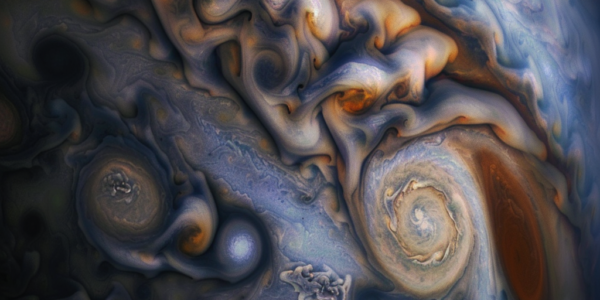December’s Celestial Showcase: Five Planets Visible in the Night Sky
This December, stargazers can enjoy a spectacular sight as five planets—Venus, Jupiter, Saturn, Mars, and Mercury—grace the night sky. With Venus shining brightly in the southwestern sky and Saturn’s stunning rings visible even through small telescopes, this month offers a unique opportunity for astronomy enthusiasts. Jupiter stands out as the brightest planet, while Mars will become more prominent as the month progresses. Don’t miss the chance to witness this celestial event—perfect for both amateur and seasoned sky watchers!
NASA’s Webb Telescope Challenges Planet Formation Theories with New Discoveries
NASA’s James Webb Space Telescope has uncovered groundbreaking evidence of protoplanetary disks around ancient stars in the Small Magellanic Cloud, challenging existing theories of planet formation. These findings reveal that disks persist much longer than previously thought, enhancing our understanding of how planets form and the potential for life beyond Earth.
New Hypothesis Suggests Massive Planet Influenced Solar System’s Orbital Configuration
Recent research suggests that a massive planet, potentially larger than Jupiter, may have influenced the orbits of our Solar System’s planets during its formative years. This new hypothesis challenges existing theories of planetary migration, proposing that an external force could explain the peculiar orbital characteristics of gas giants. As scientists explore this theory, they aim to uncover the complex dynamics that have shaped our Solar System and others in the galaxy.
Study Explores Capture of Rogue Planets and Interstellar Objects in Solar System
A groundbreaking study explores the potential for our Solar System to capture rogue planets and interstellar objects (ISOs), enhancing our understanding of cosmic dynamics. With the Vera Rubin Observatory set to boost detection capabilities, researchers delve into the mechanics of capture points, revealing insights into the history and evolution of our celestial neighborhood.
Rare Opportunity to See Mercury in the Night Sky this July
Don’t miss the rare opportunity to see the elusive planet Mercury in the night sky this July! Learn how to spot Mercury, the smallest planet in our solar system, and enhance your stargazing experience with binoculars or a telescope. Mark your calendar and head to a dark, clear area for a magical view of Mercury’s dance in the cosmos.
Remains of ‘Buried Planet’ Uncovered Deep Within Earth, Potentially Linked to Moon-Forming Impact
Scientists have made a fascinating discovery deep within the Earth, uncovering the remains of a ‘buried planet’ possibly linked to a moon-forming impact 4.5 billion years ago. Seismologists identified massive ‘basal mantle anomalies’ beneath the Pacific and Africa, suggesting a unique material composition. Researchers speculate these anomalies could be remnants of a planet named Theia, offering insights into Earth’s collision history and moon formation. The discovery opens new avenues for understanding celestial collisions and planetary dynamics.
Scientists Discover Evidence of Planet Nine in Our Solar System
Scientists have made a groundbreaking discovery pointing to the existence of an unknown planet within our solar system, referred to as Planet Nine. Leading astronomer Konstantin Bogytin and his team have uncovered compelling evidence supporting this theory, highlighting the influence of an undiscovered planet on the unusual orbits of trans-Neptunian objects. The activation of the Vera C Rubin Observatory in Chile is expected to provide further insights into this mysterious celestial body.
New Study Suggests Planetary Engulfment May Be Common in the Cosmos
A new study published in Nature suggests that planetary engulfment may be a common occurrence in the cosmos. An international team of scientists examined pairs of closely spaced co-natal stars—stars born at the same time from the same dust and gas mixture. While these stars should initially have similar compositions, the researchers found that 8 percent of the twin pairs exhibited one star emitting elements typically found on planets. This insight offers a potential method to enhance exoplanet detection efficiency.
Our Accidental Universe: A Journey Through Space and Mystery
Join astrophysicist Chris Lintott on a captivating journey through the universe in Our Accidental Universe. Delve into the mysteries of Venus’s clouds, the potential for extraterrestrial life, and the challenges of observing the universe’s early stages. A must-read for anyone curious about the cosmos and the endless possibilities that lie beyond our planet.
Unusual Fluctuations in Jupiter’s Magnetic Field
Unusual fluctuations in Jupiter’s magnetic field could reveal secrets about the gas giant’s core. Scientists from Harvard University observed changes in the magnetic field, indicating the presence of mysterious waves deep inside Jupiter. These fluctuations, concentrated in the ‘Great Blue Spot’, suggest the presence of waves in the metallic core, potentially unlocking the forces governing Jupiter’s magnetic field.










